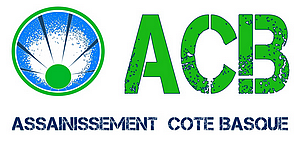Finally, the output is grouped by the column department. The output shows all the employees’ IDs and their respective sales in the first half of 2022. The query is almost exactly the same as in the previous example.

That way, you’ll consolidate all the concepts you learned here. Along the way, you’ll probably make a lot of mistakes. This is desirable, as there’s no better way of learning than trying basis sql to correct your own mistakes. This is also one of the queries we advise you to include in your SQL toolbox. It’s similar to the previous one, as it uses an aggregate function.
Differences Between SQL & NoSQL Databases – MySQL & MongoDB Comparison
This constraint ensures that all the values in a column satisfy a specific condition. This command is used to delete the information present in the table but does not delete the table. So, once you use this command, your information will be lost, but not the table. When you use this statement, complete information present in the table will be lost. In SQL, Wildcards are special characters used with the LIKE and NOT LIKE keywords. This allows us to search for data with sophisticated patterns rather efficiently.
In this tutorial we will use the well-known Northwind sample database
(included in MS Access and MS SQL Server). In data-driven industries where managing databases is very important in regular, Here are some important SQL applications. We will use this table in our demonstrations in this article. If you want to master SQL, you must be comfortable using these 20 basic SQL queries. These are the fundamentals that will allow you to build solid SQL knowledge.
The ‘CREATE VIEW’ statement
Mastering WHERE is essential for everyone who wants to use SQL. Our complete guide to the WHERE command has more information and examples. Create a recursive view (one that refers to a recursive common table expression). Ensure any data modified through a view meets the rules defined by the rule. A value that uniquely identifies a record in a table.
- This is a great place to stop and get more practice on what you’ve learned so far.
- The UPDATE statement is used to update data in a table.
- In SQL tables, these are included as constraints, where a table can have a primary key, a foreign key, or both.
- RDBMS is the basis for SQL, and for all modern database systems such as MS SQL Server, IBM DB2, Oracle, MySQL, and Microsoft Access.
EXISTS is used to test for the existence of any record in a subquery. SELECT INTO copies the specified data from one table into another. Below is a comprehensive list of SQL commands, organized by the top-level of each (e.g. SELECT TOP is within the SELECT category). To display Company, minimum of Purchase_Qty grouped by the month of purchase.
SQL Database
You can also rollback to a SAVEPOINT that has been created before. COMMIT is for saving every transaction to the database. FETCH specifies the number of rows to return after the OFFSET clause has been processed. The OFFSET clause is mandatory, while the FETCH clause is optional. IN allows us to specify multiple values we want to select for when using the WHERE command. To display S_No, Item_Name and cost of all those items where Item_Name has the letter ‘o’ in second position.
Databases are essential for many businesses, and SQL is a perfect tool to communicate with them. And SQL has a simple syntax, which makes it easy to learn and use. You don’t have to be a programmer to understand what’s going on in a query. A subquery is a query that is nested inside another query, or inside another subquery. Create a trigger, or update an existing trigger if one is found with the same name. Create a new table based on the structure of an existing table.
Opposite of a left join, this will return all rows from the right table even where there is no match in the left table. Rows in the right table that have no match in the left table will have null values for left table columns. Essentially, SQL language allows us to retrieve and manipulate data on the data tables. In this article, we will understand and gain the ability to write fundamental SQL queries. At first, we will take a glance at the main notions that we need to know about in order to write database queries. SQL (Structured Query Language) is a programming language used to manage and manipulate data in a relational database.

